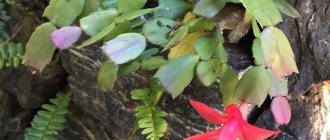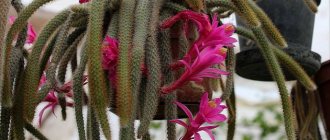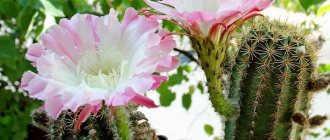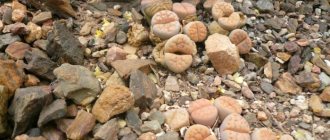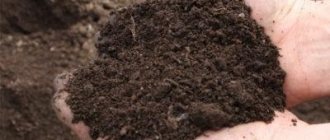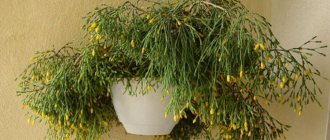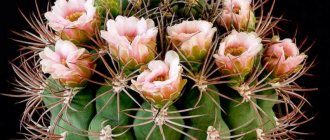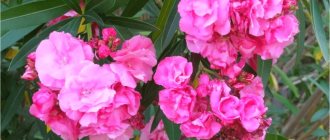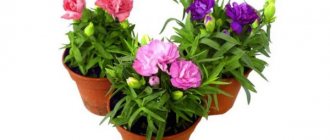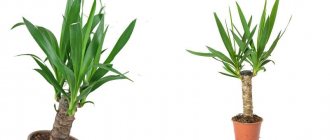Author: Elena N. https://floristics.info/ru/index.php?option=com_contact&view=contact&id=19 Category: Houseplants Published: December 18, 2018Last edits: January 11, 2021
- Diseases and their treatment
- Aeonium nobile
Aeonium (lat. Aeonium) is a genus of plants of the Crassulaceae family, originating from the Canary Islands and northern Africa. Aeoniums are also naturalized in South Western Australia. According to The Plant List, there are 36 primary and 39 hybrid species in the genus. Some representatives of the genus are popular indoor plants.
General description of succulents of the genus Aeonium
Representatives of the genus Aeonium are succulent crops with long curved stems and almost perfect rosettes of leaves. Visually it may seem that these are not real, but artificial plants.
Photo of Eonimum in natural conditions
Aeoniums form fleshy rosettes that grow 5-60 centimeters in height. The diameter of the leaves is up to 60 centimeters. They have a round shape. The stems can be both short and long, sometimes branched. The shade of the leaves is different - there are solid colors or variegated ones - with white, yellow, red or green splashes.
New leaves actively develop every year. The lower leaves die off, and the stem, in turn, lengthens. The root system of Aeonium is branched. Thread-shaped roots appear at the places where the leaves are attached to the stems.
Flowers are formed from the middle of the rosettes. Visually, they are very small, resemble stars, and create groups. Most varieties bloom at the end of winter or at the beginning of summer. The crops can be either purely low-growing or branching, creating original bushes.
Most Aeonium representatives can withstand frosts down to -4 degrees, but there are also varieties that cannot withstand low temperatures.
Characteristics, appearance
Aeonium is a genus of succulent plants from the Crassulaceae family. Endowed with characteristic features that distinguish it from other plant species.
- The trunk is tree-like, branching, erect, brown. The branches are curved.
- The leaves are fleshy, leathery, collected in dense rosettes at the tops of the stems. There are green-leaved and burgundy-leaved species (Atropurpureum) that require good sunlight to maintain color.
- The root system is quite powerful, but vulnerable to decay. In many species it is possible to form additional aerial roots.
- Flowers of different shades: white, red, yellow. They are formed on a long, thick stalk. The inflorescences are large, umbrella-shaped.
Key points in caring for the Aeonium succulent at home
These succulent plants do not require much care from you. You just need to adhere to certain conditions in growing these colorful flowers.
Photo of Aeonium grown in the garden
What soil is suitable for Aeonium?
Like other succulent plants, Aeoniums need well-draining soil. Use cactus potting mix in combination with perlite for extra drainage at a ratio of about 1 to 1. Other gardeners recommend using sandy soil by mixing cactus potting mix with coarse sand (about a 2 to 1 ratio). A mixture of regular soil, coarse sand, perlite or pumice will also work. If you grow them in pots, repot them every 2-3 years in fresh soil.
Temperature
For Canarian succulents during the growing season, the acceptable temperature range is +20…25 °C. However, plants do not like frost and very high temperatures.
Remember! Aeoniums have a growing season from autumn to spring. In summer they remain dormant.
Watering the Aeoniums
Succulents of the genus Aeonium do not require abundant watering. Water them every five to ten days. But in case of prolonged heat, you need to water more often. On the other hand, too much moisture can be a problem for some species.
A good way to check if it's time to water is to check the soil moisture. It is best to water only after the soil in the pot has dried 1/3 of the way. In winter, moisture is limited and carried out only after the leaves begin to lose turgor.
Information about other succulents
Kalanchoe Blossfeld variety 'Kalandiva'
Crassula or Crassula: features of the genus Crassula
Features of the Agave succulent genus and how to grow them
Fertilizer
Feed during the growing season with a balanced, half-strength fertilizer approximately once a month. You can use a slow-release granular fertilizer with a minimal amount of nitrogen. Do not feed while at rest.
Lighting
Aeoniums require at least six hours of sunlight to fully color their leaves. Provide as much light as possible, but with some shade during hot summers. If you notice that the plant is stretching, it means that the plant is not receiving enough light and is reaching towards the sun. Move the plant to a brighter area.
Photo of Aeonium, who received burns due to prolonged exposure to the sun
On the other hand, if your Aeonium is exposed to direct sunlight for too long in the summer, it will most likely get burned. Try to limit the time the flower is exposed to sunlight in the summer. For the optimal amount of light received, it is better to choose windows facing east or west. If you can't provide enough light during the winter or have long, dark winters, consider using a grow light.
How to care for Aeonium during dormancy
Succulents go dormant during the summer in very hot, dry weather, especially when left outside in the summer heat. When you see that your Aeoniums are dropping a lot of their lower leaves, the stems will appear bare and unkempt and it may look like the plant is dying, but in reality it is just going through a dormant period. Succulents shed their leaves when they are dormant.
Don't expect too much activity or growth from the Aeoniums during this period. During this time, leave the plant alone and do not stress the plant by cutting stems, repotting or propagating the plant. You can continue to water the plant as usual. Refrain from overwatering and refrain from fertilizing during the dormant season.
Aeonium pruning
After flowering, the rosette of Aeonium dies, releasing a peduncle. It is necessary to trim the flower stalks of the plant along with the dried rosettes.
This video shows the process of pruning faded flower stalks of Eonimum with expert advice
Reproduction methods
Growing from seeds
Aeonium seeds purchased in a store should be sown evenly over the surface of the soil mixture used for growing seedlings. Using a spray bottle, moisten the crops and cover the top of the container with transparent film or glass. For better seed germination, the air temperature should be approximately 20 degrees. After the seedlings become stronger, they are planted in individual cups for growing. After the bush has formed a leaf rosette, it is planted in a permanent pot.
Stem cutting
A stem with a leaf rosette is used as a cutting, which is cut from the parent bush using a very sharp, disinfected knife. The cut should be oblique at an angle of 45⁰. Sprinkle the cuts with crushed charcoal, after which the cuttings are left for two or three days to dry. Then it is planted for rooting in a sterile soil mixture consisting of leaf soil and sand. The cuttings are buried only 20–30 mm. To ensure that the roots appear as quickly as possible, make sure that the soil mixture in the pot is always damp. The light should be bright, but at the same time diffused. As a rule, roots appear after 1.5–2 months.
Reproduction of succulent Aeonium by cuttings, crown formation
Leaf cuttings
Separate one leaf plate from the outlet, after which it is left for several hours to dry. Then, at the cutting site, it is buried in the substrate for rooting. Watering is carried out using a spray bottle, and for this purpose well-settled water is used, the temperature of which is close to room temperature. During the rooting period, the leaf cutting must be provided with the same conditions as the stem cutting. After some time, small rosettes should appear near the leaf plate. When they grow up, they are planted in permanent containers.
Common pests of Aeoniums
Aeoniums are not immune to pests, which sometimes attack succulents, especially when they are outdoors. Fortunately, they are tough and hardy plants that can cope with almost anything, even severe infestations. A few common pests that can damage Aeonium are:
Aphid
These are small insects with a thick, teardrop-shaped body. They may suck leaves or flowers at the ends of stems, especially on the underside of the plant's foliage.
How to deal with aphids : treat the plant with a mixture of soapy water. Add a few drops of dish soap to 1-2 cups of water and mix well. Spray on infected areas and the undersides of leaves. You can also add 1 teaspoon of vegetable oil to soapy water and mix well. Spray on infested areas where you see insects. If necessary, repeat the treatment about once a week until the problem goes away.
Mealybugs
The Aeonium succulent is particularly susceptible to mealybugs. They are tiny and very easy to miss. An early sign that your plants have mealybugs is the white cottony growths you see on your plants. Mealybugs are slow moving insects and can be easily identified and removed. You can usually spot them on the leaves or undersides of leaves, and between the joints of the plant.
How to remove mealybugs : Use a cotton swab or Q-tip dipped in rubbing alcohol and apply it directly to the bugs and anywhere you see the white cottony substance. Alternatively, you can use a spray bottle and spray rubbing alcohol directly onto the bugs and white fuzz. You can also dilute the alcohol by about half with water.
Instead of alcohol, you can also use soap, such as dish soap, diluted with water.
If necessary, repeat the treatment about once a week until the problem goes away. Isolate the infested plant to avoid infecting other plants, as mealy bugs can easily spread from plant to plant.
You can learn more about Aeoniums and their care from this video
Diseases and pests
The following pests can harm aeonium: felt grass and spider mites. Bushes affected by felt grass will grow slowly, their leaf plates will begin to become covered with a white coating that resembles cotton wool. To cope with the pest, it is recommended to spray the flowers with a soap-alcohol solution or Actellik and Fitoverm.
A barely noticeable web on the leaf blades indicates a spider mite invasion. The green mass begins to turn yellow and fall off. Cracks appear on the surface of the foliage. The growth rate of ornamental crops is slowing down. To cope with spider mites, experienced gardeners recommend rinsing the leaf blades under running water . After the green mass of the plant dries, the plantings should be treated with chemicals:
- Aktellik;
- Fitoverm;
- sulfur powder.
Aeonium is not susceptible to diseases, but lack of proper flower care can cause rot in the root system. The most common cause of root rot is stagnation of water in the soil.
How can you propagate the Aeonium succulent?
Most species of succulents of the genus Aeonium are monocarpic (they die after flowering). If the plant has side shoots, the plant continues to live. Otherwise, the entire plant will die. This is why you need to periodically plant new plants from cuttings. Any Aeonium succulent reproduces in three ways - seed, leaf and cuttings.
Propagation of succulents by seeds
The seed method consists of scattering seeds over the surface of the soil, without immersing them deeply. The container is systematically ventilated, and the planted seed is sprayed. To ensure successful seed germination, create greenhouse conditions by covering the container with glass. The optimal temperature for such a process is considered to be +20 degrees.
Propagation of Aeonium by cuttings
The second method is succulent cuttings. To do this, the stem with the rosette is cut 5 cm lower than the rosette itself. The cut must be processed using crushed activated carbon.
Photos of Aeonium cuttings
In the container where the fresh seedling will grow, be sure to add a sand mixture with leaf soil (ratio - 2 to 1). Afterwards, the Aeonium cuttings are planted and rooted. A prerequisite is soil moisture. The formation of roots can be observed after 15-20 days.
Reproduction by leaves
Leaf propagation involves preparing several leaves. Carefully tearing off several leaves, drying them for at least 2-3 hours, after which they are laid out on the surface of the soil. It is necessary to systematically spray the surface so that the soil remains slightly moist. After a certain time, roots and later young rosettes will begin to form at the top. After they grow up, transplanting into separate pots is allowed.
Worth knowing! Most Aeoniums have thin leaves and little pulp. Because of this, the succulent often does not have time to grow roots and form a rosette before the leaf dries out. If you decide to propagate Aeonium using this method, you need to use as many thick leaves as possible to increase the chance of seeing a young plant.
Brief description of cultivation
- Bloom . At home, aeonium almost never blooms.
- Illumination . A large amount of bright sunlight is needed.
- Temperature regime . In summer - no more than 25 degrees, and in winter - from 10 to 12 degrees.
- Watering . During the growing season, watering is carried out 1 or 2 times every 7 days. In winter - once every 30 days.
- Air humidity . Could be anyone.
- Fertilizer . During the growing season, once every 15–20 days, a mineral complex for succulents and cacti is used for this purpose. During the dormant period, the bush is not fed.
- Rest period . In winter time.
- Transplant . While the bush is young - once a year, adult plants - once every 2 or 3 years.
- Reproduction . By cuttings and seed method.
- Diseases . Rotten.
- Pests . Aphids, mealybugs, mites and scale insects.
Aeonium - types, varieties, propagation, care, the secret of a successful culture - master Georgy Aristov
Main species of the genus Aeonium
There are more than 35 varieties of these crops; let’s look at the most popular ones.
Aeonium arboreum
This is a succulent crop, has a small branching, up to 2 meters in height (in natural conditions). The diameter of the stems is up to 3 centimeters. The leaves reach a length of up to 15 centimeters and a width of up to 5 centimeters.
Photo of Aeonium arboreum
In different varieties, the foliage color can range from glossy green to black. The flowers are bright yellow, up to 2 centimeters in diameter, blooming at the end of winter.
Aeonium nobile
A little-known species, but very beautiful. Characterized by its large size. Large fleshy leaves form a rosette up to 60 cm in size.
Photo of Aeonium nobile
Of all the variety of Aeoniums, this species has the most beautiful flowers, complementing the succulent reddish leaves.
Haworth's Aeonium (Aeonium haworthii 'Dream Color') or Aeonium 'Kiwi'
Shrubby succulent with large branching. It reaches a height of up to 50 cm. Of all the hybrids, Aeonium Kiwi stands out for its incredibly luscious foliage.
Their color is light green, but with a slight grayish tint. The center of the rosette is rich green in color. Quite easy to care for.
Aeonium canariense
The birthplace of culture is the island of Tenerife. Forms beautiful dense leaf rosettes, very close to the ground.
Aeonium canariense
The petals are painted yellow, their height is up to 70 centimeters.
Aeonium balsamiferum
A shrub with dense, thick leaves and a sinuous shape. Shoots are branched.
Aeonium Balsamiferum
The rosettes are painted in a light green shade, visually reminiscent of roses. The leaves are pointed, quite fleshy and dense. Blooms with a golden yellow hue.
Aeonium Tabuliforme
Prefers moist soils in natural conditions. The leaves are fleshy, hairy, and dark green in color.
Aeonium Tabuliforme
It is grown as a perennial or annual plant.
Aeonium virgineum
It has practically no stems. It forms many loose leaf rosettes. This allows the culture to grow quite widely.
Aeonium virgineum
The leaf blade is light green in color, but with a pinkish tint. Under natural conditions, the crop can grow up to 100 cm. The color of the flowers is yellowish.
Aeonium lindleyi
The height of this variety is up to 50 centimeters. This is a multi-stemmed plant. Rosettes up to 9 centimeters form on the stems; they are supported by juicy, thick leaves.
Aeonium lindleyi
Their surface is sticky, with slight pubescence. The flowers are small, yellow in color, forming panicles.
Popular varieties of Aeonium arboreum
This species has few varieties, but they all impress with their original appearance.
Aeonium arboreum var. atropurpureum
Characterized by dark purple foliage. The dark shade and perfect geometric shapes of the rosettes create a truly stunning plant.
Photo of Aeonium arboreum var. atropurpureum
As it ages, it develops a tall, woody stem. Needs excellent drainage and good lighting.
Aeonium arboreum var. atropurpureum forma cristata
This is an amazing succulent shrub that produces magnificent purple leaf rosettes of an original shape at the ends of its branches, which change over the course of several years.
Photo of Aeonium arboreum var. atropurpureum cristata
It blooms with light yellow flowers that form long clusters.
Aeonium arboreum var. rubrolineatum
This variety is derived from the species "Aeonium arboreum", selected for the color of its leaves, which are green in winter and yellow-orange or brownish with stripes in summer.
Photo of Aeonium arboreum var. rubrolineatum
This plant reaches a height of 1.5 meters. The flowering season is summer, when orange flowers appear in clusters. Bush-shaped plant.
Aeonium arboreum var. atropurpureum 'Zwartkop'
One of the most common varieties of succulent, forming several gray-brown stems 1.2 m high.
Photo by Aeonium Schwarzkopf
The Zwartkop variety is memorable for its tall arching stems and large rosettes of dark purple black foliage. Differs in height and rosette size from the common Aeonium arboreum Atropurpureum which has shorter stems and smaller dark reddish-purple foliage.
Signs and superstitions about the Aeonium succulent
All varieties of this genus are non-toxic and do not emit harmful substances. Therefore, flowerpots are placed in any room. According to Feng Shui, such flowers symbolize prosperity and long life in the home. It is believed that representatives of the genus are capable of not only organically complementing the interior, but also increasing the internal strength of the residents of the house. Those who want to attract finance, love and health to their apartment are recommended to keep such flowers at home.
Indoor flower Aeonium looks good as a bonsai. It is easy to trim. Knowing all the nuances and rules of how and when to prune, you can create original plant shapes.
Separately, the healing properties of Aeoniums should be mentioned. Plant juice is actively used for herpes, inflammatory processes, and abscesses. It contains many antiseptic substances that destroy various types of bacteria. The juice is also used to treat itching, burns and abrasions.
Healing properties of Aeonium
Aeonium is sometimes used in folk medicine.
- The juice of the leaves is used to treat glaucoma, herpes, and burns. It has antibacterial properties and promotes tissue regeneration. Women add juice to cosmetics to get rid of wrinkles and rejuvenate their skin.
- The oil has antiseptic properties. It is used to treat inflammation, wound healing, and allergic rashes.
Despite the healing properties, do not self-medicate! Be sure to consult your doctor. Self-medication can be dangerous to health. The components that make up aeonium juice can cause side effects and have contraindications.
Currently, aeonium is popular among many gardeners. It attracts attention with its unusual, exotic, decorative appearance. It can decorate any home interior and be used to create flower arrangements or green mini-aquariums. It is not difficult to care for him. If you give him your care and attention, he will delight you for a long time and create comfort in your home.
Cuttings of Aeonium Schwarzkopf
Aeonium Schwarzkopf reproduces well by cuttings. Thanks to this, the plant also rejuvenates and becomes more decorative. The cutting procedure goes like this:
- Cut healthy shoots (up to 10 centimeters in length) using a sharp knife. Let them dry for a day or two. If you live in a humid area, it may take more than two days depending on the thickness of the stem. The thicker the stem, the longer it takes to dry.
- After the cuttings have dried, they are immersed in a well-drained substrate to a depth of 8 centimeters; a prerequisite is to bury them at least halfway.
- Water the soil every few days or when dry and keep the container containing the cuttings out of direct sunlight.
- After a few weeks, roots should begin to develop.
After some time (about three weeks), the stem cuttings should be planted in regular Aeonium soil.
This article uses materials from the site succulentplantcare.com
How to replant aeonium
- As a succulent, aeonium needs light, loose, permeable soil - mix leaf soil, turf soil, peat and coarse sand in equal proportions; Soil for cacti is also suitable.
- By adding charcoal, you will protect the succulent from most diseases, and the obligatory laying of a high layer of drainage (7-8 cm) will prevent the appearance of root rot.
- Replant young flowers every year; adult plants require replacing the soil and container once every 2-3 years.
- You can transfer or partially replace the substrate, leaving the degree of depth the same.
The video will tell you about the correct transplantation of aeonium:
Growing aeonium from seeds
Aeonium from seeds photo seedlings
- It is enough to scatter small seeds on top of the soil, spray with water from a spray bottle, and cover with film.
- When maintaining a temperature of 20°C, the seeds will quickly germinate, producing friendly sprouts that need to be grown by planting individually in separate cups.

